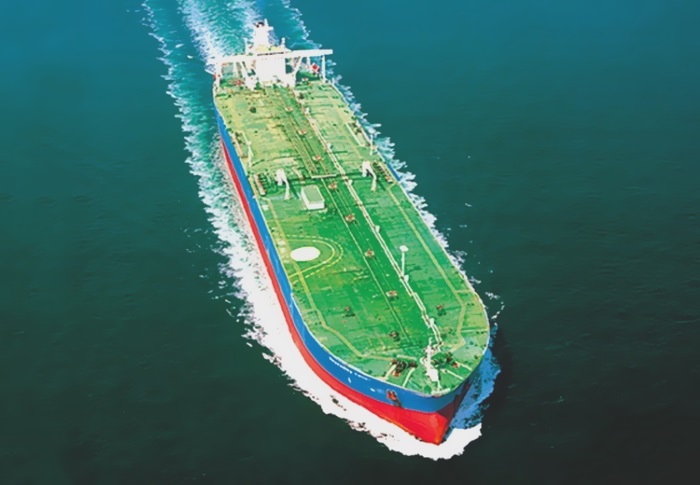The tanker market has taken advantage of a diminishing tonnage supply, combined with a significant increase in crude oil loadings. In a recent weekly report, shipbroker Banchero Costa said that “2021 was a very negative year for crude oil trade. Total loadings in the whole 12 months of 2021 were down -4.4% y-o-y to 1,887 mln tonnes, excluding all cabotage trade, according to vessels tracking data from Refinitiv”.
“However, things have turned around quite spectacularly in 2022, despite the surging oil prices and risks of economic recession. In the first 8 months of 2022, global crude oil loadings were up +8.2% y-o-y at 1,342.4 mln tonnes, well above the 1,240.4 mln tonnes in Jan-Aug 2021, but slightly below the 1,343.2 mln tonnes in the same period of 2020. Exports from Saudi Arabia are up +20.2% y-o-y to 237.3 mln tonnes in Jan-Aug 2022, above pre-Covid levels. Seaborne shipments from other AG countries are also up by +9.9% y-o-y to 340.2 mln tonnes in the same period, but still below pre-Covid levels. Exports from the USA have surged by a further +22.0% y-o-y to all time records of 105.7 mln tonnes”, the shipbroker said.
According to Banchero Costa, “Russia is the second largest seaborne exporter of crude oil in the world after Saudi Arabia, accounting for 11.1% of global shipments so far this year. In the first 8 months of 2022, Russia managed to ship 148.4 mln tonnes of crude oil (excluding domestic cabotage), up +16.1% year-on-year. This follows two relatively disappointing years during the Covid pandemic. In the 12 months of 2020, seaborne crude exports from Russia declined by -15.1% y-o-y to 191.0 mln tonnes, from 225.1 mln t in Jan-Dec 2019. In the 12 months of 2021, seaborne crude oil exports from Russia rebounded somewhat by +3.8% y-o-y from 2020, at 198.3 mln tonnes. This however was still well below the volumes seen before 2020. The rebound in exports seen this year however brings volumes back to almost pre-Covid levels, with 148.4 mln tonnes in Jan-Aug 2022 compared to 150.7 mln t in Jan-Aug 2019 and 139.6 mln t in Jan-Aug 2018”.
The shipbroker added that “about 68% of crude oil shipped from Russian ports so far in 2022 was loaded in Aframaxes, 31% in Suezmaxes, and none on VLCCs. The reason for this is that most shipments are pretty short haul. However, the balance is shifting towards larger tonnage. In 2021, only 21% of shipments were loaded on Suezmaxes and 78% on Aframaxes. Most of the increase in exports this year has been from the Baltic Sea and Black Sea, whilst exports from Russia’s Far East ports actually shrunk. In Jan-Aug 2022, about 58.7 mln tonnes (about 40%) were shipped from Russia’s Black Sea ports, up from 50.3 mln t in the same period of 2021. Essentially all of it was from the port of Novorossiysk. Destinations from Novorossiysk were primarily the EU (34.2 mln t in Jan-Aug 2022), Turkey (5.6 mln t), Israel (1.0 mln t), but also China (3.4 mln t), S. Korea (3.7 mln t), India (7.4 mln t). In Jan-Aug 2022, about 49.1 mln tonnes (about 33%) were shipped from Russia’s Baltic Sea ports, up from 36.9 mln t in the same period of 2021. Of these, 28.4 mln t from Primorsk Jan-Aug 2022, 20.5 mln t from UstLuga. Destinations from Russia’s Baltic Sea were primarily the EU (29.5 mln t JanAug 2022), but also Turkey (4.9 mln t), China (3.5 mln t) and India (9.7 mln t). In Jan-Aug 2022, about 10.7 mln tonnes (about 7%) were shipped from Russia’s Arctic coast ports, up from 9.3 mln t in the same period of 2021. Of these, 3.9 mln tonnes from Murmansk Port, and 6.2 mln tonnes from the Umba FSO. Destinations from Russia’s Arctic coast were primarily the European Union (8.4 mln t), but also the UK (0.4 mln t) and India (1.2 mln t). In Jan-Aug 2022, about 30.0 mln t (about 20%) were shipped from Russia’s Far East ports, down from 30.8 mln t in the same period of 2021. Of these, 24.7 mln t from Kozmino, 3.1 mln t from De Kastri, 2.0 mln t from Prigorodnoye. Destinations from Russia’s Far East were primarily China (21.0 mln t), South Korea (5.6 mln t), Japan (1.4 mln t), India (1.4 mln t)”, Banchero Costa concluded.
Source: Hellenic Shipping News






